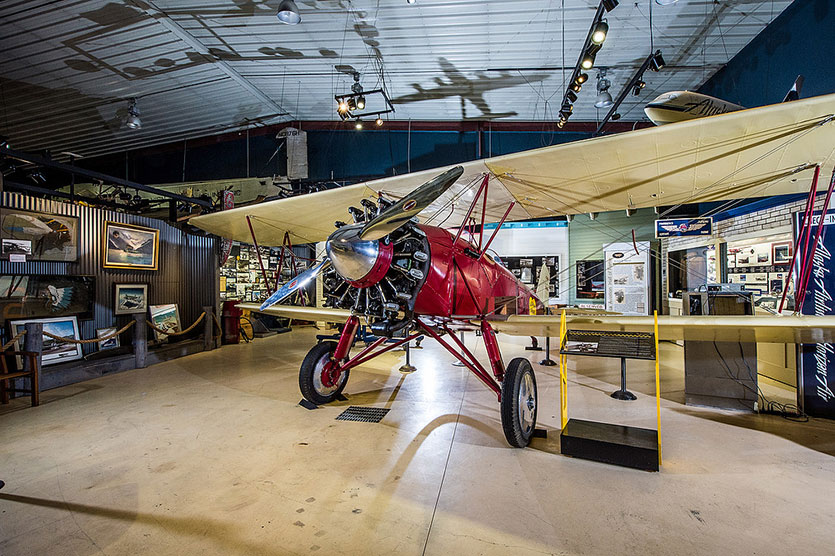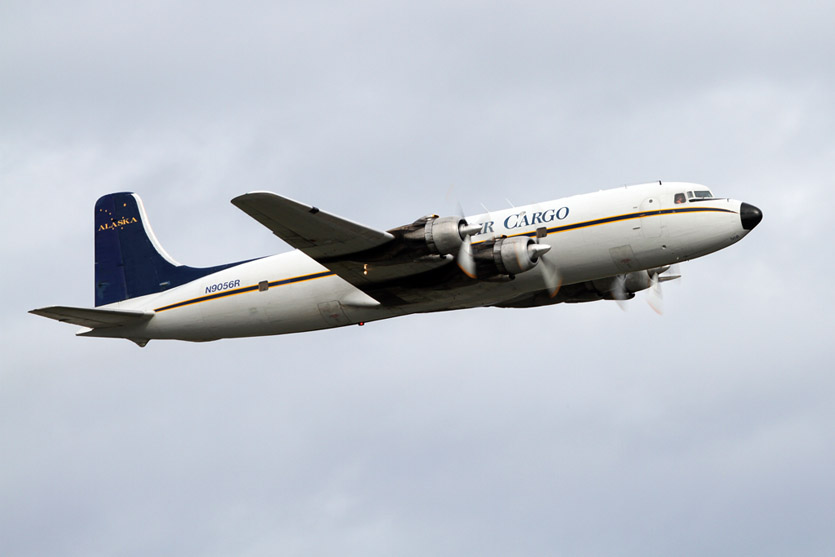|
The Alaska Aviation Museum at
Anchorage

The Alaska Aviation Museum is located
in the heart of Alaska aviation. It sits on the south shore of Lake
Hood, the busiest seaplane base in the world, with more than 87,000
takeoffs and landings per year.
Only half-mile away from Ted Stevens International Airport, Anchorage
The history of Alaska during the twentieth and twenty-first centuries is
intertwined with the airplane. James V. Martin made the first airplane
flight in the territory in his Tractor Aeroplane on July 4, 1913. Aerial
Alaska emerged in two important ways during the 1920s and 1930s. The
pioneers of flight used the territory as a byway as they flew around the
world, over the North Pole, and expressed their visions of the airplane
as a global technology. Air-minded Alaskans, embracing their own pioneer
spirit, took to the air as bush pilots and started the airplane’s
ascendance as the main form of transportation.

Upon entering, visitors are greeted by the exhibition’s centerpiece,
a Stearman C2B biplane. First bought to Alaska in 1928 by legendary bush
pilots like Joe Crosson—the first to land an airplane on Mount
McKinley—and Noel Wien, founder of the state’s first airline. The
Stearman is a wonder and serves as a testament to the strength of
Alaskan bush pilots, with a completely open cockpit exposed to the
elements.
Historical artefacts, video footage and photographs reveal the
state's remarkable aviation history, including its pioneer bush pilot
era. From their open-air cockpits, Alaska's early pilots faced some of
the planet's most inhospitable weather and challenging terrain without
maps or accurate weather information. Airplanes broke the isolation of
communities previously accessible only by boat in summer or by dog team
in winter

|
This retired F-15 sits in front of one of the Hangars at
the Alaska Aviation Heritage Museum.
This ground instructional training aircraft was transferred
to the museum where it will be restored and displayed.
It is one of two training aircraft to be transferred to the museum.
|
The history of Alaska during the twentieth and twenty-first centuries
is intertwined with the airplane. James V. Martin made the first
airplane flight in the territory in his Tractor Aeroplane on July 4,
1913. Aerial Alaska emerged in two important ways during the 1920s and
1930s. The pioneers of flight used the territory as a byway as they flew
around the world, over the North Pole, and expressed their visions of
the airplane as a global technology. Air-minded Alaskans, embracing
their own pioneer spirit, took to the air as bush pilots and started the
airplane’s ascendance as the main form of transportation. During World
War II and the Cold War, world powers fought over the Aleutians, built
an aerial bridge to Siberia, and faced each other during decades of
nuclear stalemate.
Aviation is an integral part of
Alaska’s culture, dramatically affecting the state over the past
century. From humble beginnings in 1913— the first flight in Fairbanks
was a spectacle rather than a legitimate means of transportation—air
travel has become fundamental to Alaska’s economy, and caused an
explosion of both adventure-seekers and entrepreneurs.

This can be seen al around Anchorage International Airport which has a
lot of cargo activity, not only by modern companies like Federal Express
and UPS, but also by a few small airlines still operating piston-engine
airliners. Currently the biggest player in
the propliners scene at Anchorage International airport is Everts Air
Cargo Operating the Curtiss C-46 and Douglas DC-6 from here.
The museum has over thirty aircraft on display, a restoration hangar,
flight simulators, two theatres, and a Hall of Fame. It provides an
emphasis on historic aircraft, aviation artefacts, and memorabilia that
contributed to the development and progress of aviation in Alaska,
including Bush flying, and the WWII Army base on Adak Island..
|